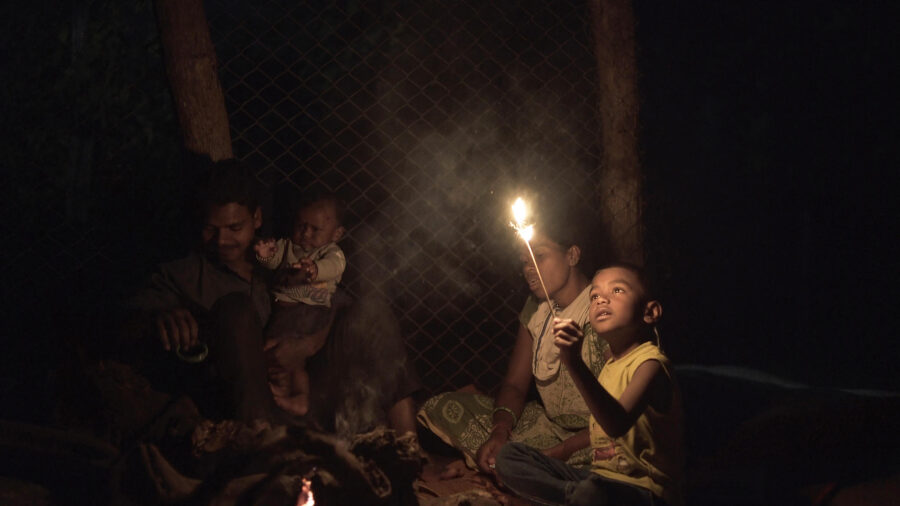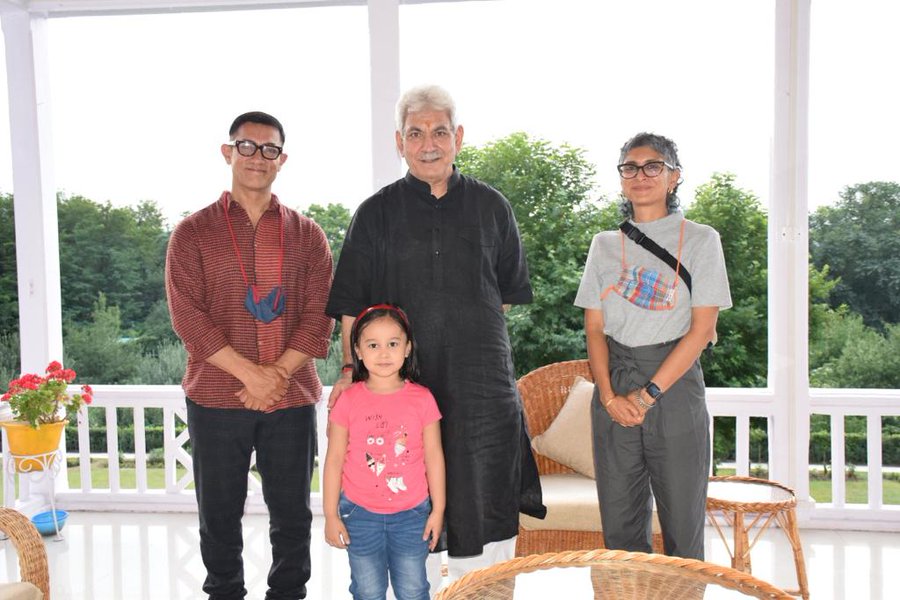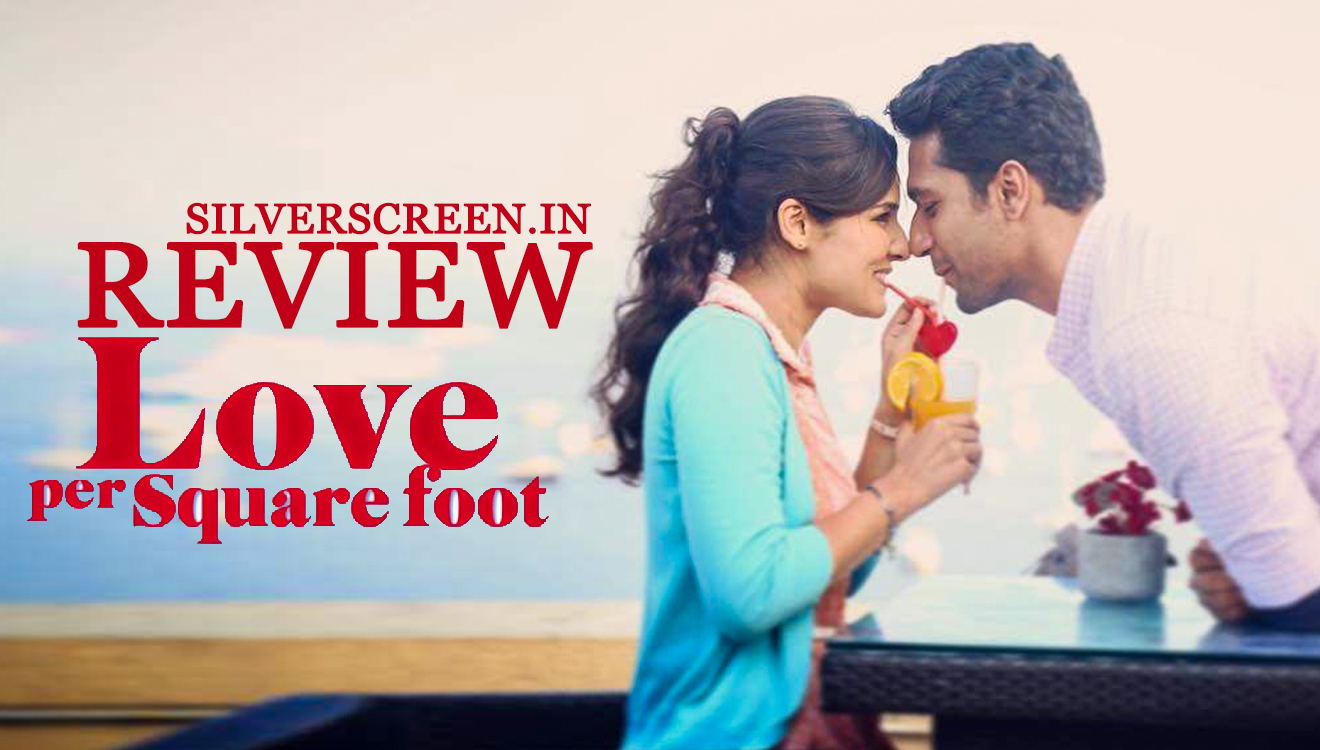Somi wears a broad smile. She’s in her late twenties—or early thirties, she doesn’t know—and pregnant with her second child. “I think it’s a girl”, she tells her husband Sukhram, five years her junior. Somi cooks, washes their clothes and takes care of their first child, while Sukhram is about the house doing nondescript work. They have a pet parrot and raise poultry in their plot of land. It might be the picture of a modest but ordinary family, except for the fact that both Somi and Sukhram are renegades from the Naxal movement who surrendered to the Indian state, received amnesty, and were resettled under the country’s rehabilitation policy for ex-Naxals. Their “second-life” in a colony in rural Maharashtra comprising refugees like themselves, is the subject of a compelling new documentary titled A Rifle and a Bag, which screened online at the Visions du Réel film festival last week.
In long, fixed shots, the opening passage of the film gives us a sense of the couple’s everyday reality: scenes from domestic life, Somi’s visit to the pregnancy clinic, the couple’s conversation about their to-be-born second child. These images of quotidian life are, however, soon punctured as we learn about Somi’s past as a Naxal commander, the deadly reprisals the couple have risked in their surrender, their lingering feeling of deracination. Somi’s role as a wife and a mother is in stark contrast with her older role as a Naxal higher-up. But Somi makes no remark about this conventional distribution of labour, content instead to secure a future for her children.

356c3a21-34b6-4a5e-b312-22d792be3b2c
A large part of A Rifle and a Bag presents the couple’s interaction with the Indian state and civil society on a day-to-day basis as part of their rehabilitation. Somi runs from pillar to post to unsuccessfully obtain a caste certificate for Sukhram, who can’t safely go back home to Chhatisgarh to get one. Without this certificate, they can’t admit their son into a school. The film develops around the central irony that Somi and Sukhram, of a tribal origin, have to identify themselves in terms the Indian state understands. The state and the civil society, though, aren’t malevolent forces. In fact, the officers, teachers and doctors whom we only hear interacting with Somi could hardly be more understanding and sympathetic. It’s the system they help function, faceless just like them, that holds Somi and Sukhram in a vice-like grip.
Earlier in the film, a self-congratulatory meeting organised by the local Rotary chapter, and blessed by the army, reinforces the new-fangled national identity of the ex-Naxals, pointing out that Naxalism is truly a national problem, affects as it does twenty-two states.
Somi and Sukhram manage to find a place for their son at the boarding school, however briefly. In a scene at the school that puts too fine a point on it, the children are made to perform morning prayers, taught violently patriotic slogans and are, quite plainly, indoctrinated into the nationalist ideology. Somi, on the other hand, hardly has any national consciousness. Asked why she joined the Naxals, she says she wanted to get back at the local landlord who let the police harass her kin.
Recommended
Through these contrasts, A Rifle and a Bag brings to surface the losses involved in the family’s integration into society. In their new colony, Somi and Sukhram don’t get land to farm on—their primary occupation—but simply a plot large enough for a house. They are not only alienated from the world around their settlement, which still associates them with Naxalism, but also their relatives in Naxal-dominated areas. That we seldom see them outside their house or within a community only exacerbates the impression of their isolation. Owing to their situation, they can only send their child to a boarding school, where the boy acquires a body of knowledge vastly different from their own, in a language not their own. In a poignant exchange towards the end, Somi recounts her Naxal background to her son, as though restoring his ties to the family history, against the narrative he will soon be taught.
Not surprisingly, Somi appears to persistently doubt whether they have made right decision in surrendering, whether their new life is indeed better. To be sure, her family is objectively “making progress”. There’s a new bike, there are new clothes, the poultry makes way for cattle. Their colony has electricity and there’s cable television at home—material comforts contrasted with her past life in the jungle. But we never fully know why Somi or Sukhram left the Naxal organisation, or what they are hoping for through their rehabilitation. Somi continues to maintain that the ideology behind the movement is righteous, even though its ways may be wrong. It’s to the film’s success that its loyalty lies with Somi’s unavowed incertitude than with any ideological certainties.
A Rifle and a Bag was produced and directed by Cristina Hanes, Isabella Rinaldi, and Arya Rothe, a trio known as the NoCut Film Collective. They adapt a non-interventional style—familiar in international documentary practice—in which Somi and Sukhram play themselves, their reality fictionalised just enough to constitute the narrative structure. They punctuate the film with repeated compositions—the house gate, Somi across an office desk, the changing phases of the moon—to impart a sense of place. This restrained form, marked by large ellipses, nevertheless makes space for considerable feeling, allowing us to recognise the tragedy behind Somi’s perennial smile.



